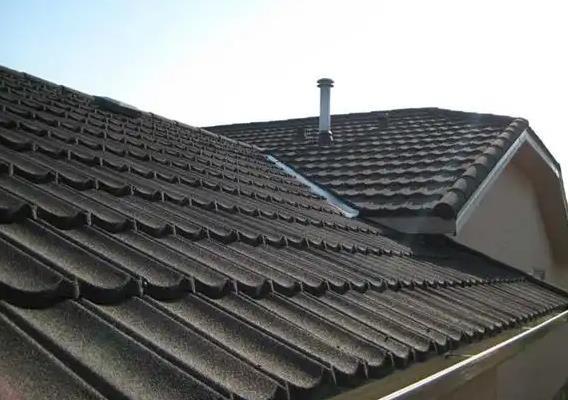Stone-Coated Roof Tiles and Winter Ice: What Happens When the Surface Freezes? Will They Crack?
- By: Cailin
- Sep 10 2025

In the snowy days of winter, rooftops are often covered in a blanket of white, creating a beautiful seasonal scene. But for homeowners with stone-coated roof tiles, this beauty sometimes brings concern: the tile surface may become covered with ice. Does this affect the durability of the roof? Could the tiles crack in freezing conditions? Let’s take a closer look at why this happens, whether it poses a real risk, and how to deal with it effectively.
1. Structure and Properties of Stone-Coated Roof Tiles
Stone-coated roof tiles are carefully engineered for strength and durability. At their core is a base of Al-Zn coated steel, which acts as a strong backbone, capable of withstanding wind, hail, and other external forces. On top of the steel base lies a layer of high-temperature bonded colored stone granules. These not only give the tiles their natural, elegant appearance but also add wear resistance and extend the service life. The outermost protective acrylic coating functions as a shield, keeping out moisture and chemicals that could otherwise cause corrosion or rust.
Importantly, the Al-Zn steel base, stone granules, and protective coating are all designed to perform well under low temperatures. This ensures the roof tiles maintain their strength and function even in freezing winter conditions.
2. Why Ice Forms and Its Impact
During winter, snow builds up on the roof. In the daytime, part of the snow may melt due to sunlight or heat escaping from inside the house. At night, when temperatures drop again, the melted water refreezes on the tile surface, forming a layer of ice.
The good news is that this does not normally cause cracking. The steel base and protective coatings have good flexibility, allowing them to adapt to thermal expansion and contraction without damage. In addition, stone-coated tiles are designed with effective drainage in mind. As long as the roof pitch is within standard requirements, meltwater can drain quickly, minimizing the chance of water pooling, refreezing, and exerting extra stress on the tiles.
3. How to Deal with Surface Ice
Natural Melting:
In most cases, the ice will melt naturally when temperatures rise. This is the easiest and safest solution, as it avoids unnecessary damage that may occur from improper manual removal.
Manual Removal:
If the ice layer is very thick and starts to affect roof performance—such as blocking drainage or even creating potential safety risks—manual removal may be needed. Always use soft tools such as a plastic shovel or rubber broom to avoid scratching the protective surface or dislodging stone granules. Clear the ice gradually, working from the eaves upward, to prevent large chunks from sliding off suddenly and causing injury or property damage.
Preventive Measures:
Prevention is always better than cure. Before winter sets in, inspect and maintain the roof to make sure gutters and drainage systems are free of blockages. Adding insulation to the attic is also a smart step, as it helps regulate roof temperature, reducing the cycle of melting and refreezing that leads to ice buildup.
Conclusion
Ice formation on the surface of stone-coated roof tiles is a normal winter occurrence and rarely leads to cracking or damage. By understanding how the tiles are designed, and by applying the right response methods, homeowners can rest assured that their roofs will continue to perform reliably even in harsh winter conditions.
With proper care, stone-coated roof tiles will stand strong against the cold, keeping homes safe and well-protected throughout the season.

